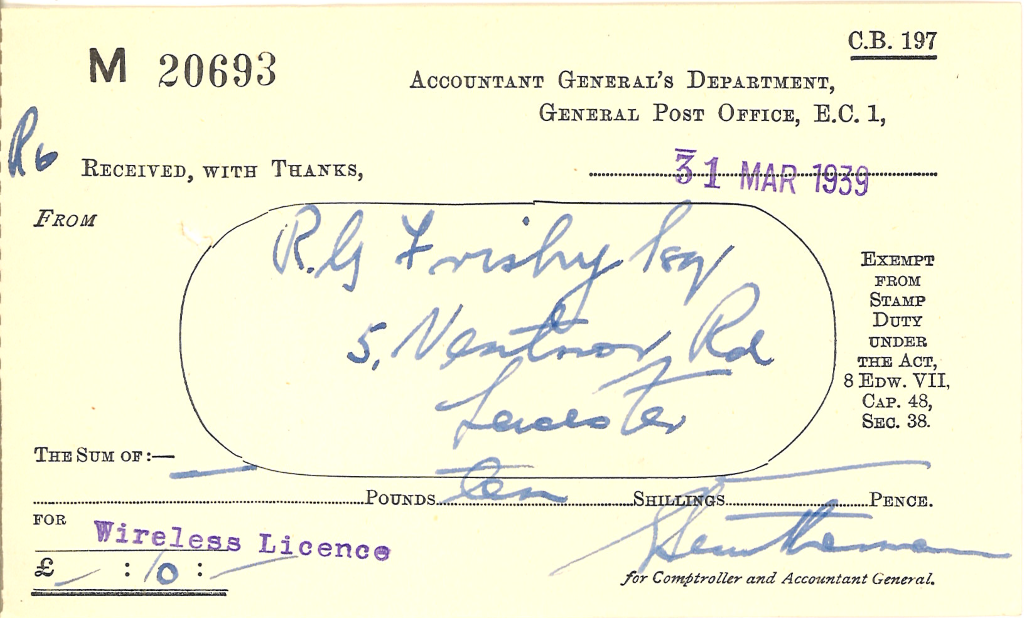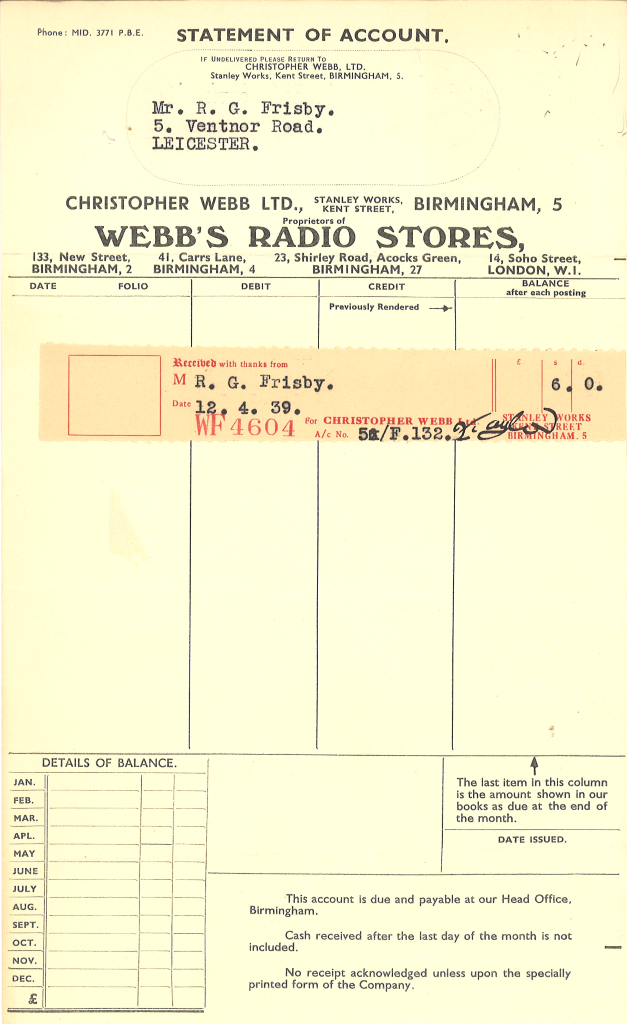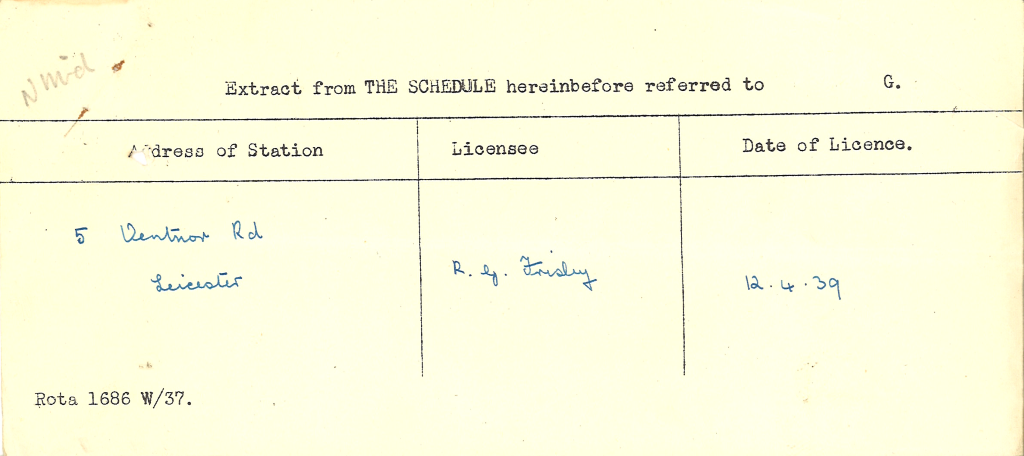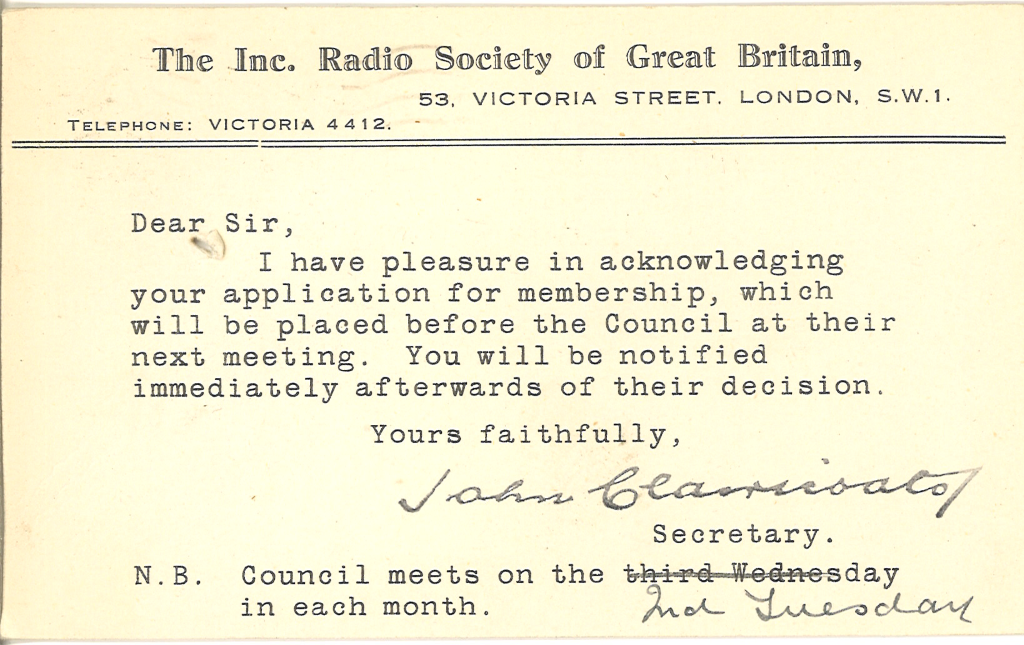Whilst I was searching through one of the Leicester Radio Society filing cabinets recently, I came across a very old "buff" folder with a string fastener. As I have always been interested in history, I was intrigued and decided to take a better look. The contents were mostly held together by dressmakers pins and appeared to be mainly correspondence with the RSGB and the Post Office during 1939 and the postwar period between 1946 and 1948.
The contents of the folder belonged to a Mr R. G. Frisby G2CFC and they provide a unique insight into amateur radio during this period.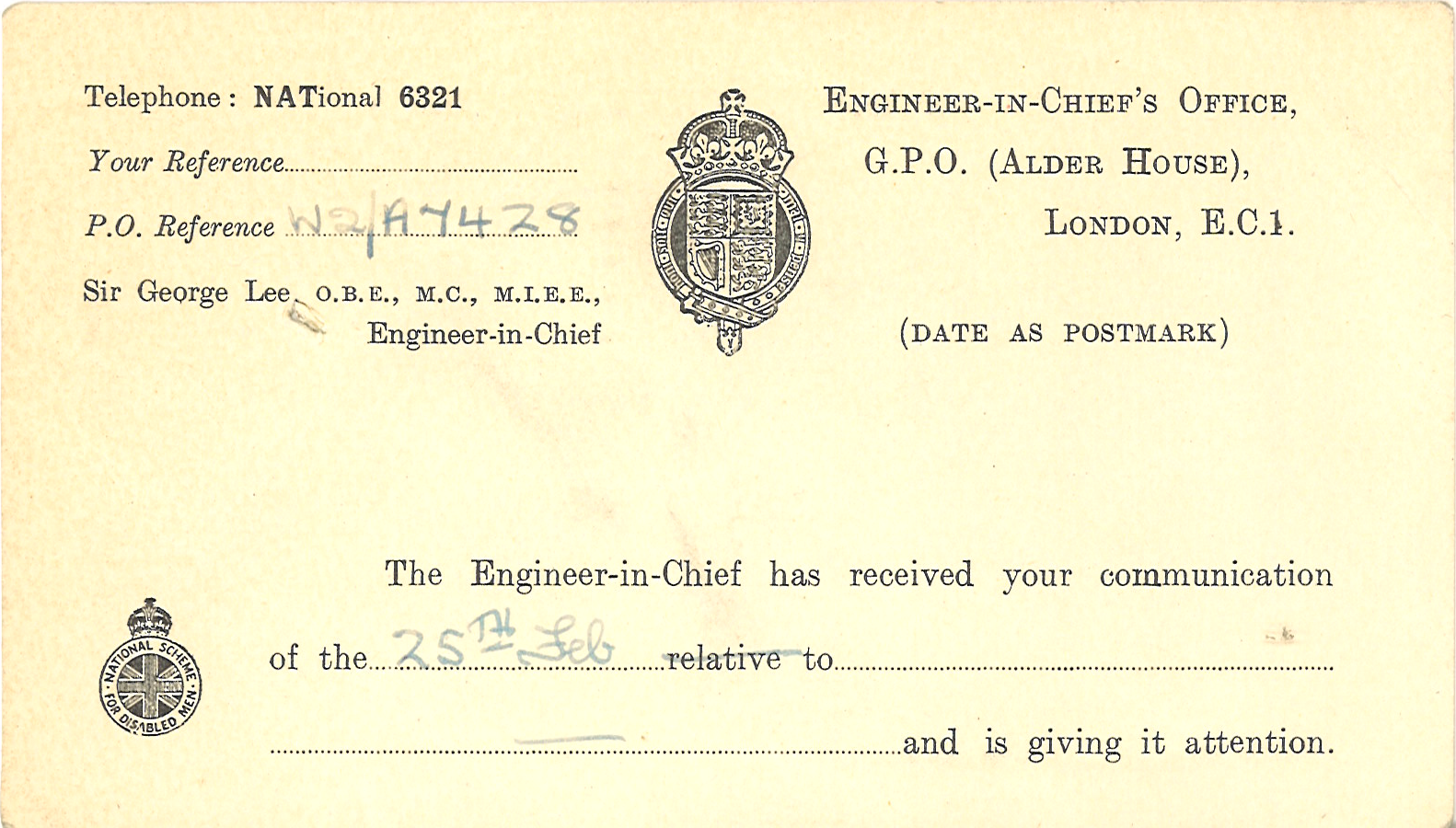 Our story begins on 7th February 1939 when Mr Frisby applies to The Engineer in Chief of the GPO (Radio Branch) for an experimental wireless transmitting licence. At this time, there were two types of licence available depending on what type of experiments you wished to conduct, these were Full Radiating or Artificial Aerial. A Full Radiating licence would only ever be issued if the applicant could demonstrate a "need" to actually transmit signals for their experiments by submitting a thesis to the Postmaster General outlining their proposed experiments. This would usually follow a significant period of AA experimentation.
Our story begins on 7th February 1939 when Mr Frisby applies to The Engineer in Chief of the GPO (Radio Branch) for an experimental wireless transmitting licence. At this time, there were two types of licence available depending on what type of experiments you wished to conduct, these were Full Radiating or Artificial Aerial. A Full Radiating licence would only ever be issued if the applicant could demonstrate a "need" to actually transmit signals for their experiments by submitting a thesis to the Postmaster General outlining their proposed experiments. This would usually follow a significant period of AA experimentation.
Most licences issued at this time were Artificial Aerial which allowed the licensee to build a transmitter with a power not exceeding 10w but the signal MUST NOT be allowed to radiate, meaning that it must be connected to a dummy-load and not an aerial. This still wasn't straight-forward as an applicant would need to to provide two referees to the GPO, presumably to ensure that they were of good character?
If you click on any of the images in this article you will be able to view a larger version (which is hopefully readable).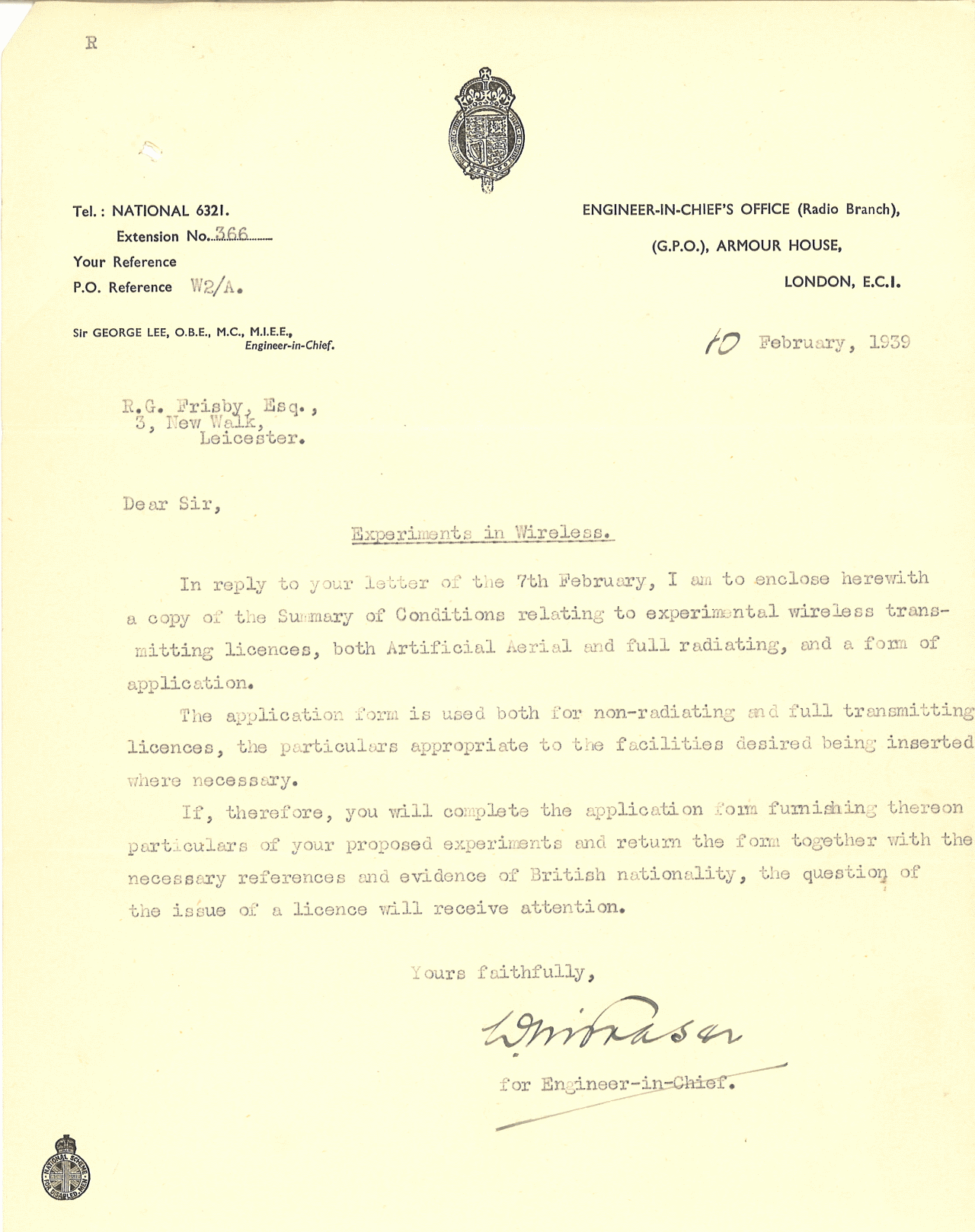
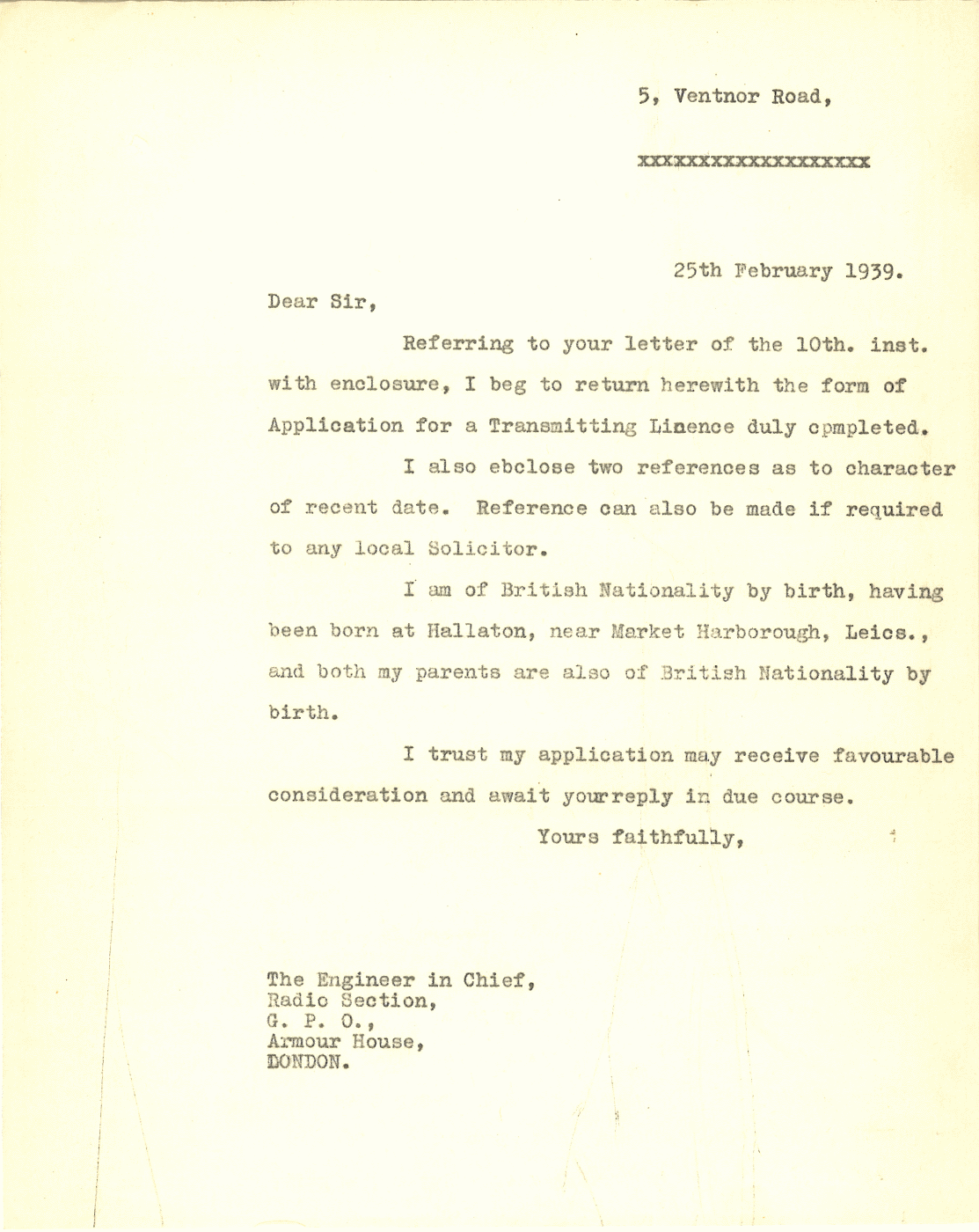
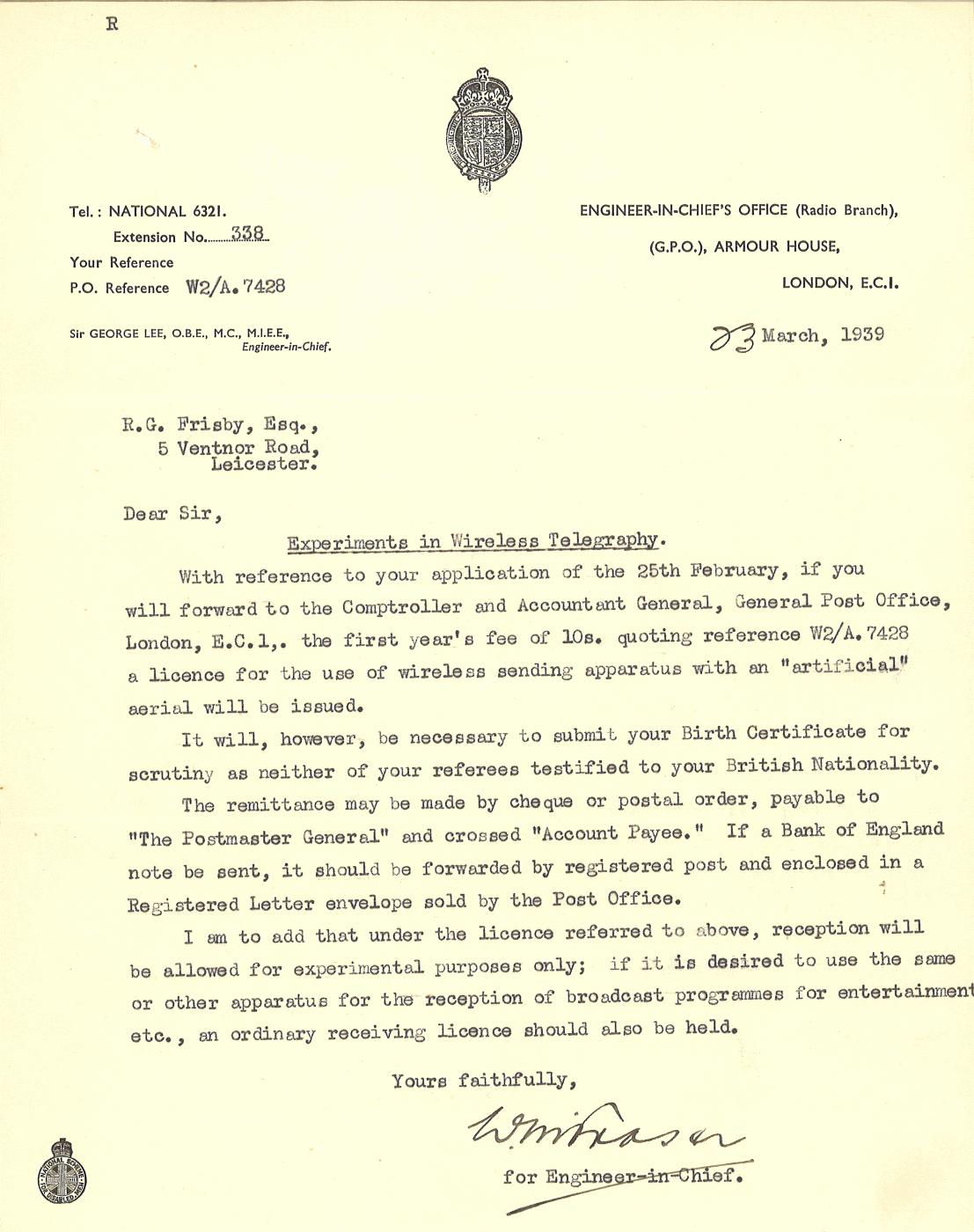
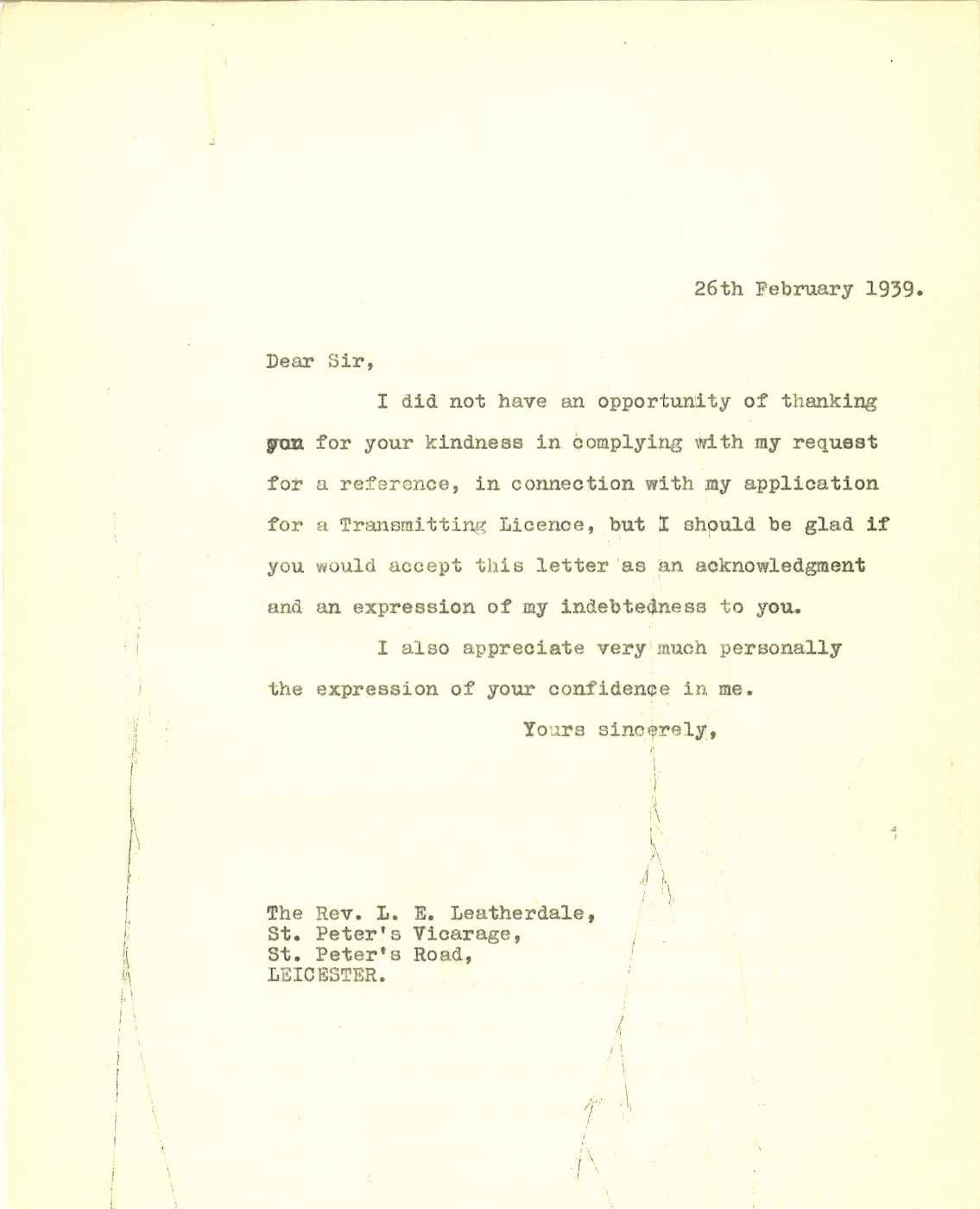
An interesting point to note that the GPO requested Mr Frisby's birth certificate be forwarded to them as neither referee was able to confirm his place of birth. Once this process had been completed to the satisfaction of the Engineer-in-chief, Mr Frisby was issued with the Artificial Antenna licence (non-radiating) of 2CFC. Payment of 10 shillings was dutifully paid to the GPO and around this time Mr Frisby also joined the Radio Society of Great Britain and purchased that staple of amateur radio, The Call Book.
At the time, RSGB members could join various groups to signify their areas of interest. As Mr Frisby was only licensed to use an artificial antenna, he appears to have expressed an interest in the groups within the Experimental Section and the Calibration Section.
We have no paperwork covering the period between late April 1939 and the end of August 1939 however events outside the suburban confines of Stoneygate would soon overtake Mr Frisbys (and everybody elses) enjoyment of his hobby.
On 1st September 1939, Germany invaded Poland (under the false pretext that the Polish Army had carried-out a series of sabotage operations against German targets near the border). The British Prime Minister, Neville Chamberlain immediately issued an ultimatum for Germany to cease military operations, but this was ignored. On 3rd September 1939, Mr Chamberlain broadcast to the nation that Britain was at war with Germany. It is interesting to think of Mr Frisby sitting around his communications receiver (obviously having obtained the correct broadcast receiving license) and listening to this broadcast that would set events in motion that would change the world forever.
That war was almost inevitable is shown by the fact that on 31st August 1939, the GPO published a notice in the London Gazette (which was also broadcast on the BBC evening news) that "all licenses for the establishment of wireless telegraph sending and receiving for experimental purposes are hereby withdrawn". Letters were also sent to licenced amateurs drawing their attention to this article.
Officers of the GPO were quick to ensure that no transmissions could take place and swiftly visited all amateurs to confiscate any wireless apparatus capable of emitting a signal. For Mr Frisby, this took place on 3rd September 1939. This was followed-up by a further visit on 22nd September 1939 where it was determined that his communications receiver could be left in situ.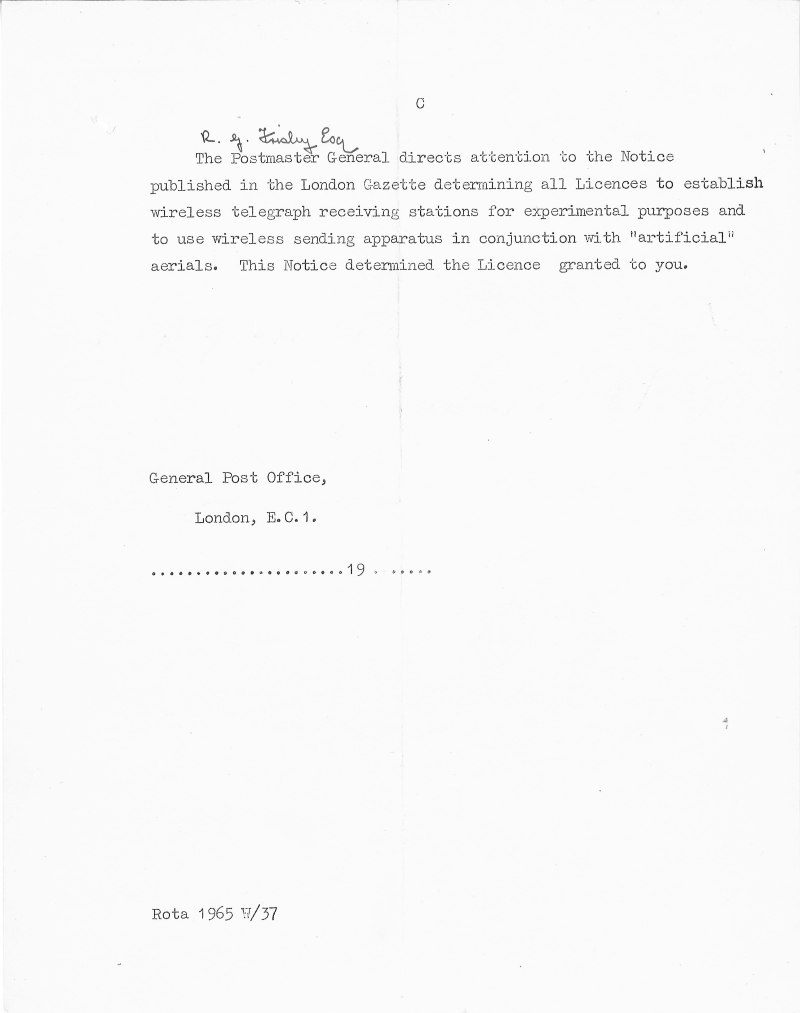
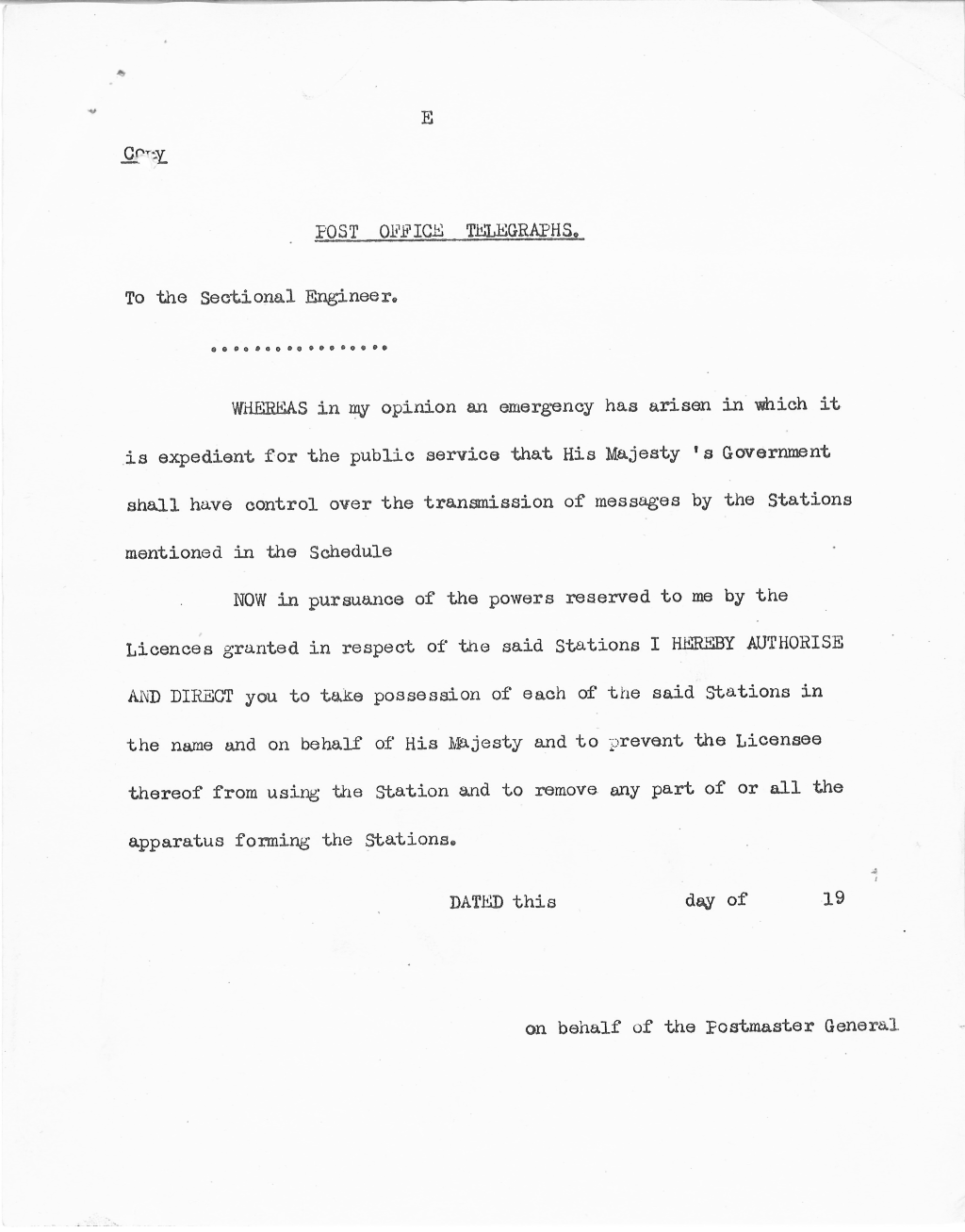
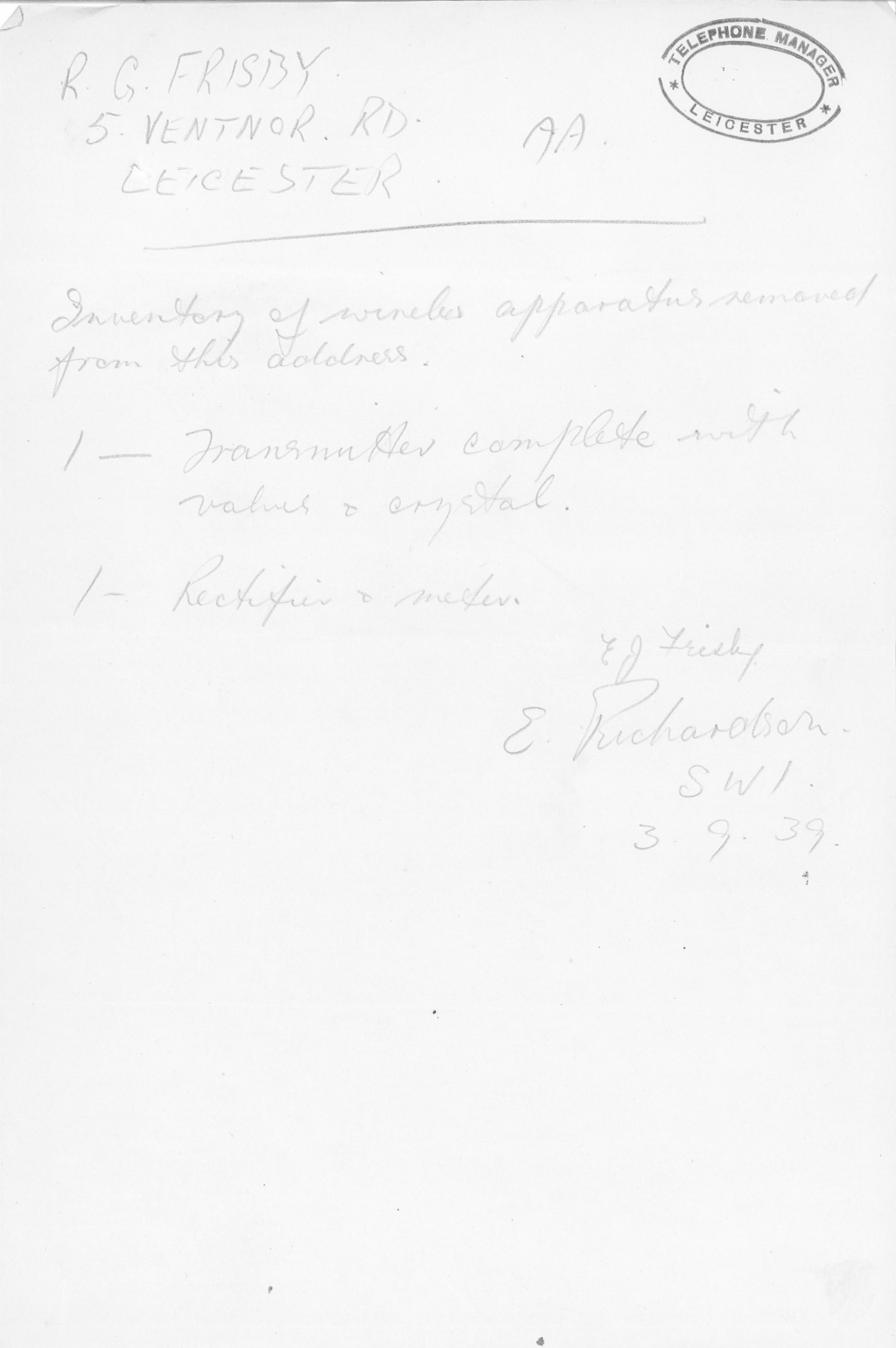
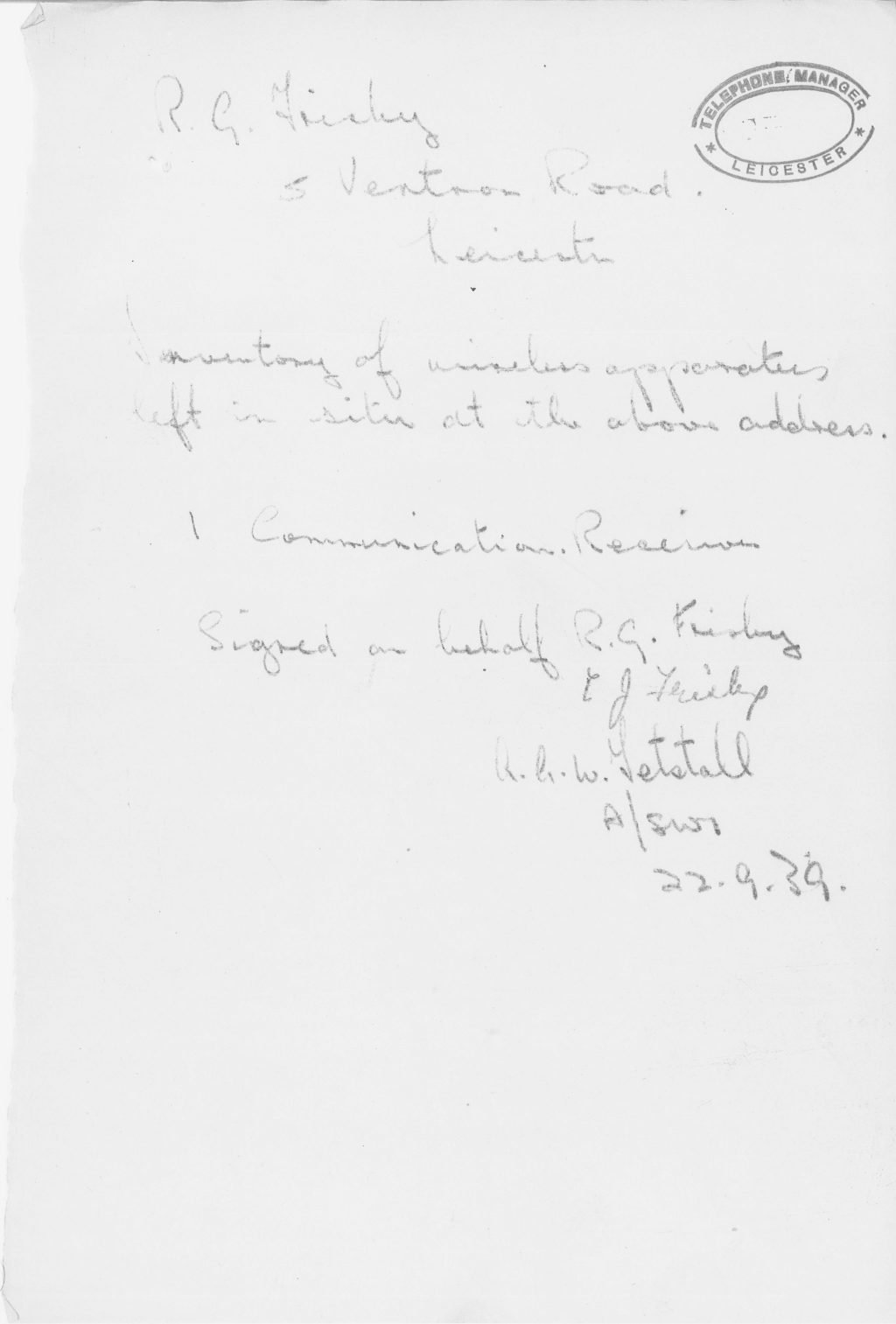
As there were no (official) amateur transmissions during the war, there is no documentation during this period but I have gleaned from later letters that Mr Frisby spent the war as an R.A.F. Signals Officer, being released from R.A.F. on 27th March 1946 with the rank of Flight Lieutenant. His passion for radio obviously influenced his wartime choices and he had already submitted an application for a "full" Amateur Radio licence prior to his release date.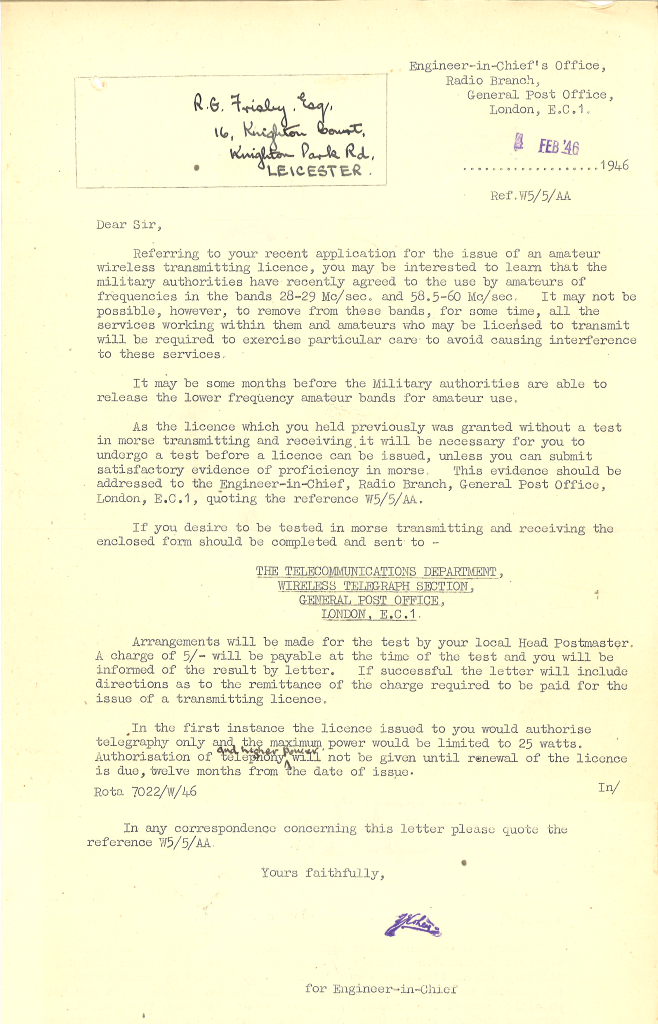
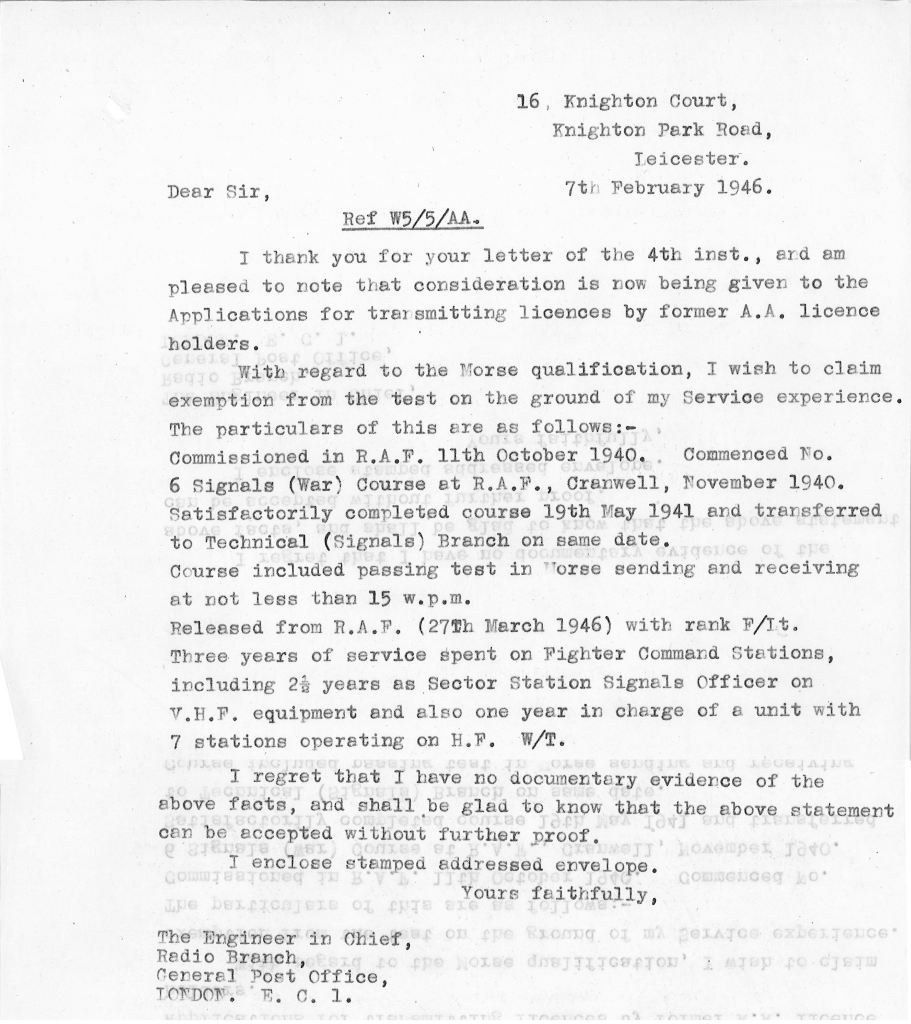
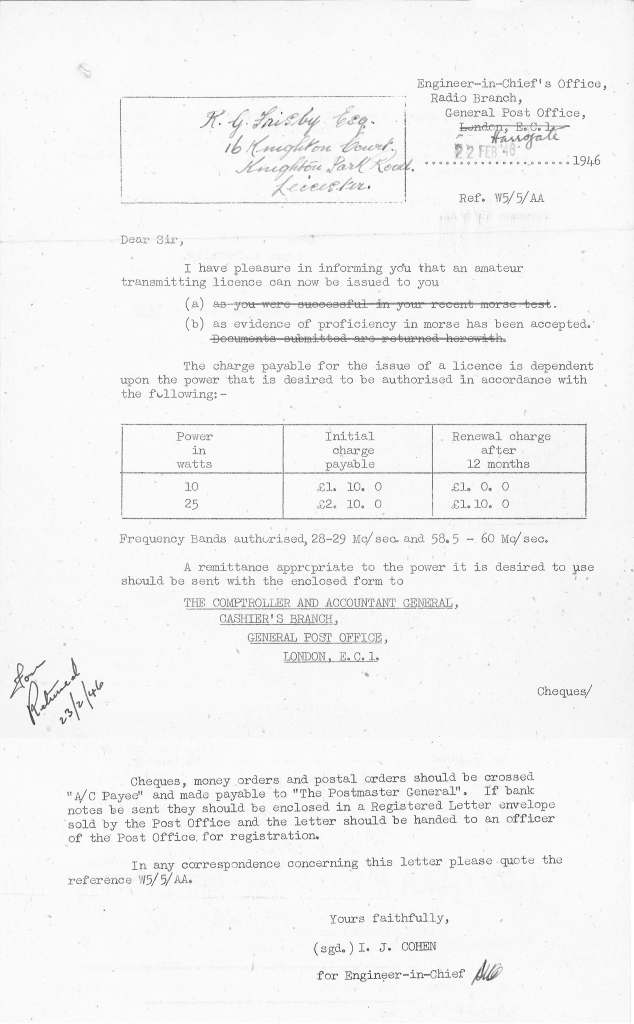
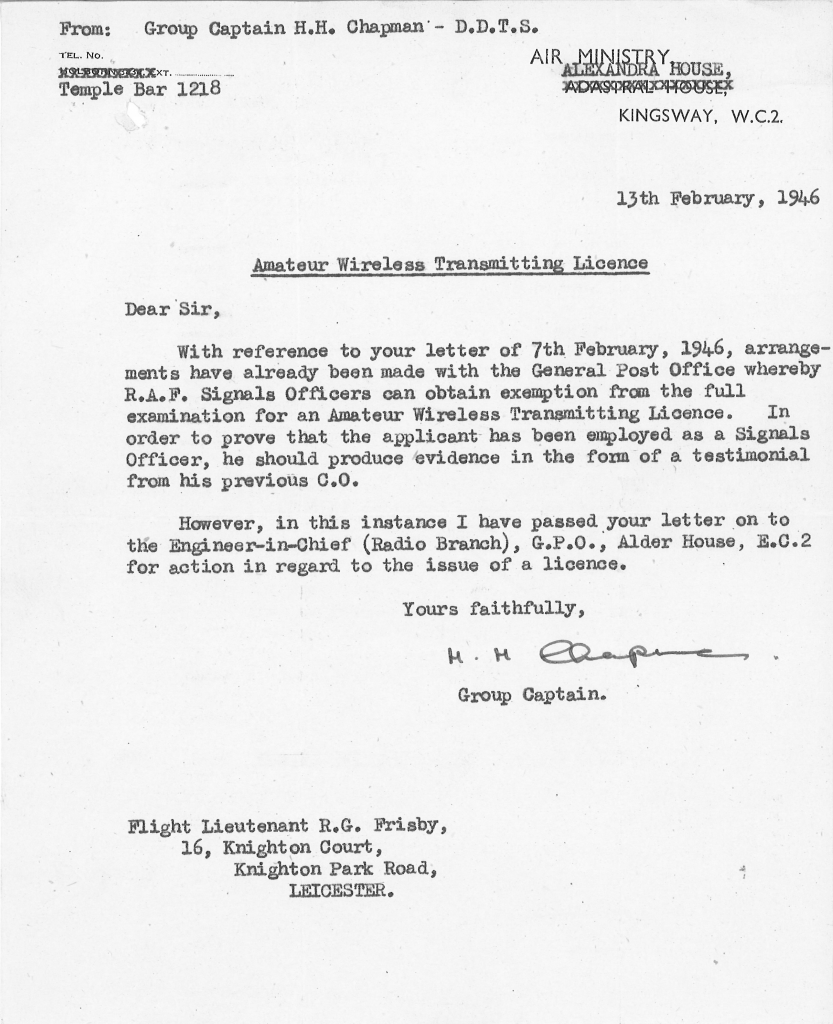
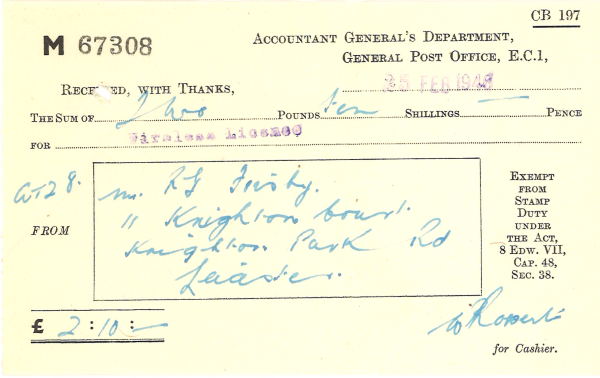
This proved to be surprisingly easy to accomplish and payment was made on 25th February 1946 but with a significant cost increase of 2 pounds 10 shillings for a 25 watt licence. At this time, the only band that amateurs were permitted to use was 160m CW. Other bands were released in July 1946 but the G2CFC licence only permitted CW operation, telephony required a variation of the licence. This variation was applied for in September 1946.
I have various other documents including RSGB receipts and applications for increased power but this is the "bulk" of the collection.
.





